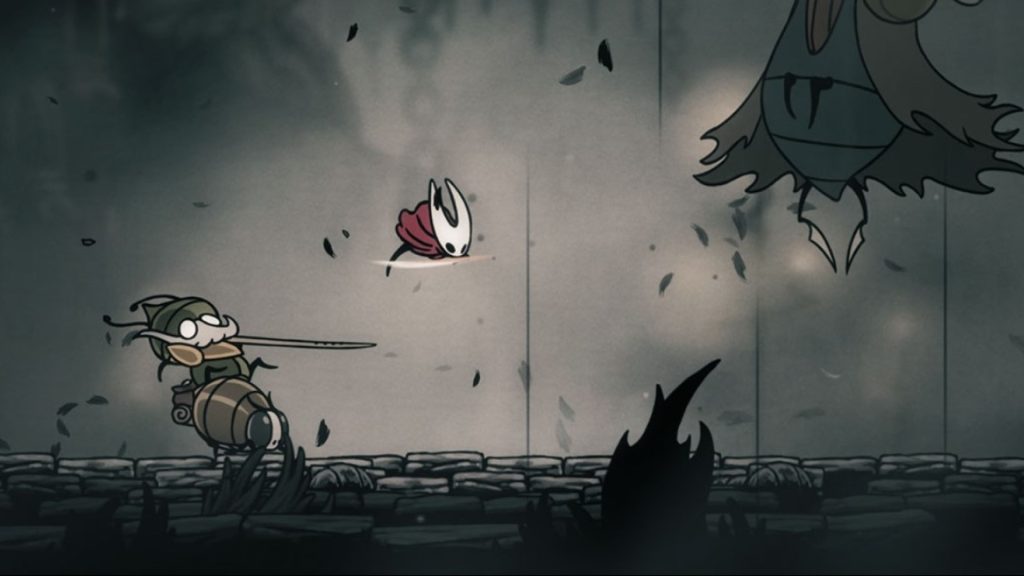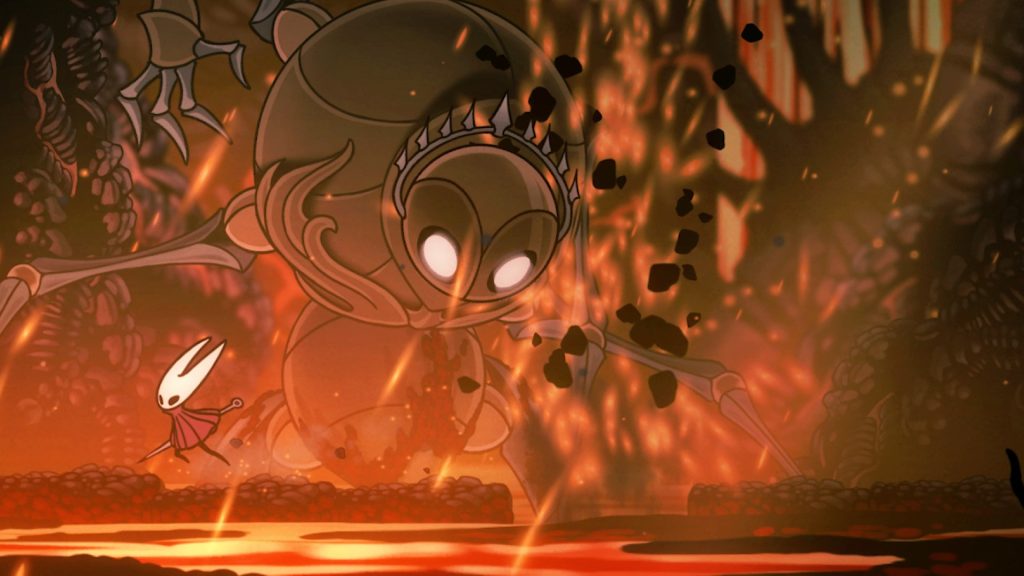The World of Hollow Knight: Silksong Pulls You In and Won’t Let Go
There’s something inherently compelling about getting lost in a world that outright hates you. FromSoftware fans will understand, which is probably why so many are reportedly drawn to Hollow Knight: Silksong. The first game had its dangers and frustrations, its traps and hazards, and its challenging boss fights, but there was an inherent beauty to all the adversity, and not just from the incredible presentation.
It’s probably why I enjoy Silksong so much more – the increased challenge and hostility of Pharloom has made me appreciate how everything feeds into the world design and vice versa. In fact, it may be one of the best video game worlds ever created, transcending its side-scrolling boundaries to feel like an actual living world.
[embedded content]
This is most apparent in the beginning when Hornet discovers Bone Bottom. Like Hollow Knight, the world is clearly in shambles, but in Pharloom, you start from rock bottom in more ways than one. The core theme is making the climb with nothing but perseverance and sheer will to reach the Citadel, a coveted place. For many, this is viewed as a way of life, a singular purpose that they must fulfill, though some express their fair share of doubts.
For Hornet, it represents more than just a challenge. It’s a quarry, a mission to get back at those who captured and whisked her away from home for whatever foul purpose. In many ways, it mirrors the Knight’s journey to wade through Hallownest, a mix of dark fantasy and cartoonish delight, to find out what ails it. As she climbs ever higher, Hornet senses a malevolent presence and makes no bones about declaring this to those who will listen.In a way, it feels like the road to the Citadel is designed primarily for suffering. Because Team Cherry changed so many hazards, including spikes and whirling blades, to deal two points of HP damage, you feel way more oppressed when tackling enemies.
Similarly, when you’re not dealing with enemies who can deplete two HP through simple contact, you have to face those with multi-hit attacks who are more than capable of pushing you into those same environmental hazards.Yet throughout all this, Pharloom’s beauty shines through. Its serenity and dangers aren’t mutually exclusive but continuously intertwined, luring the player to discover more, even while every single sense warns them to exercise caution. The lore is also woven incredibly through each environment, reinforcing the incredible art style and creating a distinct mood. Even without knowing the story behind a place, you can slowly piece things together by observing your surroundings.

One of the best examples is Greymoor, one of the biggest areas that Team Cherry has ever created. You would think that means a grand place of sorts, buzzing with attention, but it more than lives up to its name. Flying enemies hang about, attacking relentlessly like vultures. Other foes wield giant scissors, ready to slice you into ribbons like Sweeney Todd. There’s only a single Halfway Home to take refuge in, and thankfully, the denizens aren’t in the worst of spirits – Nuu, who tasks Hornet with hunting creatures and recording them in a journal, is seemingly in her own world.
However, this area is more Tim Burton-esque in its tones than simply adhering to its color scheme.It also teaches some valuable lessons, such as the benefits of pogoing off enemies to reach higher places. Assuming you fled Hunter’s March after just a handful of minutes, this is also where the first new Crest – the Reaper’s Crest – awaits, opening up even more options for mobility and combat. It’s not the only sign that exploration is rewarding and can lead to truly amazing possibilities, but it’s one of the strongest.Fast forwarding to the Citadel, I was similarly impressed with how it chose to welcome players. Some less-than-ideal sights punctuate the grandiose gate and initial walk, but Team Cherry doesn’t want to usher you in just yet. Instead, it immediately throws the player into the Underworks, a far more oppressive area than those previously seen, because you can’t leave until reaching a specific point.
No fast travel and certainly no backtracking (made all the more difficult if you didn’t upgrade weapon damage). However, it’s almost like you’re forced to gaze upon those that the Citadel keeps out of sight – not because of what others would think, but due to their unsightliness. You slowly begin to realize that they’re the lifeblood that keeps everything up top running, even when they’ve also lost their minds. Even the machinery is worn down and visceral compared to the sleek clockworks of the Citadel.
Then you begin to wonder: How many of those who made the climb were relegated to this fate? Yes, some of this horror is communicated through notes and journal entries, but for the most part, you’re piecing it together from simply observing the environment and its enemies. The Underworks feel lived and designed to be dangerous, further underscoring how sad it really is.Meanwhile, outside of the various guards, the Citadel doesn’t give the impression of danger.
Its numerous spikes feel more part of the architecture; some of its citizens roam about half-pompously, half-whimsically. There’s the feeling that even with all that’s happened, something is trying – and failing – to maintain the impression that everything is fine. A glorious facade that the majority of Pharloom’s citizens can’t even pretend is real, and that’s only part of the massive structure.
Seeing Team Cherry connect all these seemingly disparate areas – the somberness of the Whiteward, the gears and elegance of the Cogwork Core, and so on – is a delight. Maintaining a steady pace and flow for other environments while connecting them is one thing, but for the Citadel to adhere to a consistent theme while offering so much variety and challenge, and ensuring it all makes sense from a lore standpoint, is truly incredible. And the core gameplay never falters for a second, expanding even further when grappling is introduced, feeding into that wonder of discovery and the thrill of danger.

Hollow Knight: Silksong does rely on a few genre tropes, including the oddly colored walls that can be destroyed to discover hidden passages, but it also plays with those conventions in so many interesting ways. Some Benches are free to use and rudimentary, which can lull you into a false sense of security about their permanence. Others require paying, and that’s taken even further at some points in the Citadel, including the Underworks, where it’s necessary every time. Is it really required since Hornet respawns like usual at the same spot?
No, but it paints a picture of what the residents have to go through to simply rest.Exploring Pharloom, especially after shattered expectations of all that experience from Hallownest coming in handy, is a trip. A combination of needing to know what awaits around every corner, but even when confronted with the same, not immediately knowing the best possible solution.
But you can’t stop because everything about Silksong, from the gameplay to the music and the visuals, compels you forward. That I haven’t even seen possibly half of everything that it has to offer, even after clearing it within 20 hours, doesn’t fill me with dread at how much is left, but rather, a sense of awe, much like Hollow Knight, and its experience I won’t forget anytime soon.
Note: The views expressed in this article are those of the author and do not necessarily represent the views of, and should not be attributed to, GamingBolt as an organization.


Comments are closed.